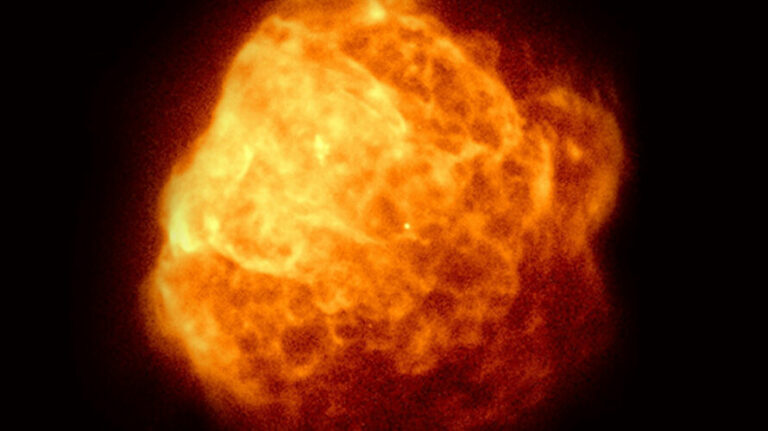Einstein Probe Captures the First Glimpse of a Supernova Remnant
On 9 January 2024, our probe “Einstein” was set on its mission to study the sky in the micro-X-rays. The universe’s night view in the mode beyond visible lights has just been seen by the first image that went into space to see in these energetic waves.
It marks the Puppis A, the supernova remains from an extremely bright star which blew up 4,000 years ago as well as invariably before humans have seen it. By that time, the picture portrayed shown the shock wave expanding from the blast but in future, Einstein will keep exploring other flashes of X-ray events.
The main purpose of the Chinese and European probe was to develop the mode of the Universe in threatening X-rays. This telescope is also called the “Einstein” after none other than “Albert Einstein” and, of course, it has software that comes with the best of the latest technology.
This technology is capable of observing black holes, neutron stars, and any other phenomenon or emissions of radiation with an X-ray.
WNT with its two instruments; the Wide-field X-ray Telescope (WXT) to provide for comparatively large field view and the Follow-up X-ray Telescope (FXT) which provides for a closer inspection of objects identified by WXT within the X-ray band.
The Einstein probe other all has three main questions it hopes to address; the first one being gravitational bends occurring in space because of black holes, the death stars exploding known as supernovae and the waves of gravity. This past picture of the remnant of supernova Puppis A prompts one to sigh in delight.
Supernova is a widespread phenomenon of stellar deaths, that embarks the life of worthwhile stars.
A stellar object like the Sun is battling hydrogen in its core and spitting out helium afterwards. Nuclear reactors produce energy in the process of thermonuclear fusion, which involves heating the substance to the point where it can start reacting. This is referred to as the nuclear force. While a star is in a specific distinct state, the balance between the thermonuclear force and the gravitational force tends to counter-act the force of gravity which is trying to collapse the star.
The fusion will be taking place in the core of the stars which continue working with different elements until an iron core is left behind. It is impossible to unite two iron nuclei due to the fact that the fusion will eventually stop. After that, gravity will take over and rule.
As the stellar matter starts graving and falls towards the core, an outburst of accelerated material follows, as it rebounds and forms a shock wave that goes through the star; this is called supernova.
There is the famous example of Puppis A, an object believed to have been an explosion which occurred about 4000 years ago. It lies almost 7,000 light years from us which implies that the light radiation, that has been detected by the probe due to Einstein, has left the source star about 7,000 years ago, and thus, it’s the most distant star which has been recorded so far.
The silhouette of the suspended cloud in the picture is that all what could be seen of the star that blew up. The center of a star, a neutron star, can be seen as a white dot against a black halo, but this is not exactly what is shown on the screen. Among the features that made the FXT image stand out, the existence of a spectrum was added to show the distribution of energy, which was important to understanding which elements were present in the readout.
Do not forget to share your opinion with us to provide you with the best posts !




0 Comments